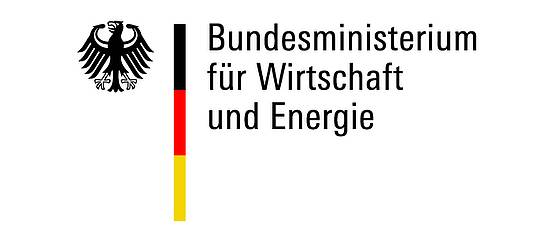The newPark as a virtual power plant
A future-oriented energy concept has been developed for the newPark. The concept meets the essential requirements that the energy transition places on a modern industrial location: from decentralised energy generation from renewable sources to consumption at the point of generation and the use of new storage technologies to intelligent load management.
In keeping with the profile of the newPark as a location for innovative companies from the fields of Industry 4.0, GreenTech and digitisation, renewable sources are to be used as a priority for the on-site energy supply in order to minimise greenhouse gas emissions.
The goal is to achieve an overall favourable energy balance through the use of solar energy and other renewable energies – all the way to energy neutrality.
This will be made possible by efficient use of the energy generated and by synergies in energy generation such as, above all, combined heat and power (CHP). To balance the highly fluctuating supply from renewable energies, the decentralised generators will be combined with the energy storage systems to form a virtual power plant.
The complex task of site-specific, environmentally friendly optimisation of energy generation and distribution will be handled by a central energy service provider, which will coordinate the generation and procurement of energy for the entire site and support the companies in all energy matters even before they move in.
CONCLUSION
The newPark is designed as an industrial and commercial area in which the possibilities of renewable and decentralised energy generation are implemented in a model manner. Renewable energies and efficiency technologies will contribute significantly to the decarbonisation of the area.
The energy concept in detail
The energy concept developed by GERTEC GmbH, which has since been updated, is based on three pillars:
1. Energy from renewable sources: solar energy, combined heat and power and geothermal energy
Solar energy and combined heat and power (CHP) play a central role in the energy concept for supplying the newPark.
The large roof areas on the industrial halls lend themselves to photovoltaics as a source of electricity. Parking lots with solar roofs could also generate electricity that feeds charging stations for electric vehicles, which can thus serve as a buffer for surplus energy. 57 percent of electricity demand could be covered in the final state of the industrial area according to a realistic assessment of the energy concept.
Also of great importance is the potential of cogeneration, which covers a further 30 percent of the electricity demand and as much as 42 percent of the heat demand. The energy concept also identifies the near-surface geothermal potential as promising. It could supply 23 percent of the heating demand and 19 percent of the cooling energy for the newPark. In conjunction with heat and cold exchangers, geothermal probes use the earth’s layers, which are comparatively warm in winter and comparatively cold in summer, to generate heating and cooling energy.
Also of great importance are the industrial waste heat potentials, which can serve to cover the low-temperature heat demand of research and development and the service sector. Solar thermal energy, i.e. heat generation from solar energy, could also make a small contribution to heat supply according to the concept (1%).
The remaining 30 percent of the heat demand would have to be covered by conventional or external energy sources.
2. Resource efficiency: use of process heat
The highly fluctuating feed-in of renewable energies requires intelligent control of energy demand or existing energy surpluses. Surplus waste heat from industrial processes can, for example, be used for heating or for hot water for adjoining buildings from the service sector or research and development.
Energy purchases from conventional sources can thus be minimised. This will result in cost advantages for the companies in the newPark.
3. Comprehensive energy service offerings and energy management
An important player for energy management, internal energy trading and the bundled procurement of energy is a service provider acting centrally for the entire newPark site. According to the energy concept, the task is to promote energy efficiency in the companies, to integrate renewable energies into the supply concepts and to carry out life cycle analyses (life cycle assessment and life cycle costs) as early as the planning phase of the industrial halls, administrative and other buildings. In addition, the energy service provider offers support and implementation of energy audits in accordance with DIN EN ISO 50001, as required to claim the tax benefits from the Electricity Tax Act, for companies in the newPark.
It also makes a significant contribution to the implementation of the sustainable energy concept. With the installation of energy management systems in all plants and their networking, a comprehensive data picture is created that enables the procurement of gas and electricity in line with demand and, at the same time, optimises the cost of energy generated on site from renewable sources (EEG plants).
Sources: newPark energy concept, as of August 2017




